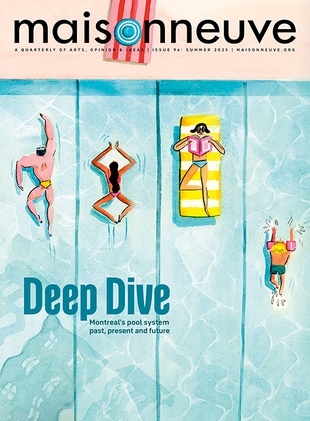Hazed and Confused
What to do about initiation rites?
Apparently, to be a member of McGill University's Redmen football team, a recruit must hold hands with his teammate, skip shirtless around campus while being called a fairy, drop his pants, bite on a dog's chew toy and have a large stick nicknamed Dr. Broom forced on his anus.
Canadians are now thoroughly familiar with this tale. It made headlines last September after one eighteen-year-old participant (who wished to remain anonymous) described the initiation rite to the press. The boy withdrew from both the team and the university, and damnation of hazing clogged the country's editorial pages. McGill responded by cancelling its football program for the rest of the season.
Of course, hazing is in no way limited to this occurrence. According to Hank Nuwer, who edited The Hazing Reader, more than eighty deaths have occurred during campus initiation rites in the US. In 2002, Mepham High School in Bellmore, New York, fired its coaches and annulled its football season after players sodomized new teammates with pine cones and golf balls. Back in Canada, thirteen members of the Tilbury Hawks, a Junior C team in the Ontario Hockey Association, were charged with 135 criminal violations after an initiation party that included group masturbation, the shaving of pubic hair and forced drinking.
The list of rites and retributions goes on and on-but such is the state of modern hazing. One hundred years ago, the practice was much different. It was a tradition among university students that called for intense practical jokes and personal servitude, with new members as the targets. It was only when soldiers returned from the Second World War, flooding schools and frat houses, that physical elements such as paddling and calisthenics-were introduced. The rites became more enshrined, widespread and severe, crossing acceptable lines of behaviour and thus requiring secrecy.
In the past two decades, the degrading nature of these rites has found its way into the public record. With political correctness blossoming in educational institutions, hazing has become a less quietly tolerated custom and more of a PR disaster. During the Fall 2005 semester, for example, McGill was responsible for countless newsworthy items: the school opened a state-of-the-art music building, it offered to take in Tulane University students left without facilities in the wake of Hurricane Katrina, and it was the only Canadian school ranked in the UK's Times Higher Education Supplement. And yet, once Dr. Broom was deployed, no achievement or gracious act of charity could overshadow him.
McGill is certainly not alone in having to deal with hazing. Throughout North America, a whole new range of developments has evolved to increase awareness of the practice. There are now experts in the field. Karen Savoy founded Mothers Against School Hazing, while specialists like Hank Nuwer continue to produce data that academics such as Susan Lipkins can use in the study of hazing. Lipkins specializes in "hazardous hazings" that occur in high schools and in colleges. Her commitment to the subject has led her to appear on countless talk shows and to write a book for parents, teachers and coaches on how to prevent dangerous initiations. Her production company, Reel Psychology, is creating an anti-hazing documentary entitled Betrayal.
The Internet has also helped in the battle. Because of the anonymity afforded by the online world, new snitching software has made it very easy for hazees to expose their hazers. For us $365 a year, for instance, a school can get a page at Report-it.com. The site compiles complaints from students and then turns them over, sans names, to administrators. The site also provides information for kids about various school, community and government resources that can help them.
Legal tactics, too, have become popular over the past decade. Certain school groups, like international fraternity Kappa Alpha Psi, have turned hazing on its head. In order to join, an initiate mustn't be spanked or probed but rather sign a "personal liability, responsibility and compliance" form that compels pledges to avoid hazing and to report it if they see it. More drastic than this, though, is anti-hazing legislation. Forty-four American states have such laws in place. Though they are enforced to varying degrees, many of them were passed due to the diligence of community members. And while Lipkins and Savoy lobbied the American government for national hazing legislation, no such law exists in Canada.
While new strategies are underway to combat hazing, experts indicate we're still only seeing the tip of the iceberg. Hazing is everywhere, and its effects go deep. What is interesting about the aforementioned McGill initiate is his decision to remain anonymous-to break the clandestine tradition of hazing while preserving his own obscurity. Though he's moved away from McGill and Montreal, the boy still fears reprisal. "The mind games are much worse than the physical hazing in many instances," said Lipkins. "The bruises go away, but the mental effects can stay with you for life."





